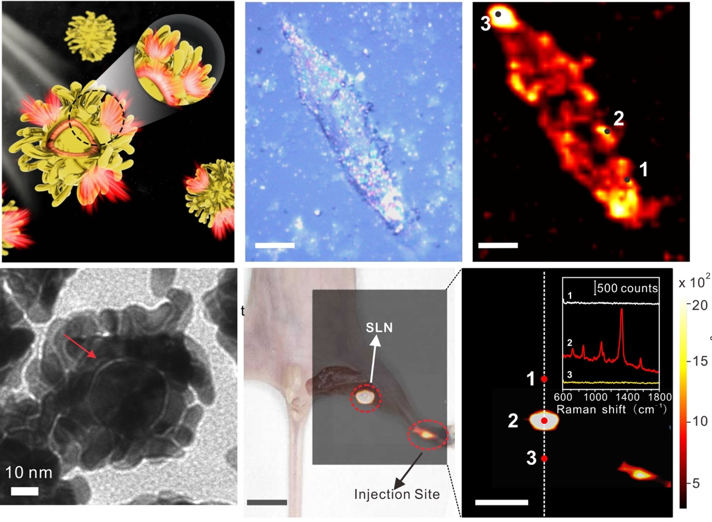


The development of ultrabright gap-enhanced Raman tags for high-speed bioimaging by Jian Ye's team
August 30, 2019

On August 29, 2019, Jian Ye's group, the School of Biomedical Engineering, Shanghai Jiaotong University, published their new research “Ultrabright gap-enhanced Raman tags for high-speed bioimaging” on Nature Communications. Their research developed a new type of gap-enhanced Raman probes (P-GERTs), by simultaneously embedding Raman signal molecules in the sub-nano gaps between the inner and outer substrates of sub-nano particles, to achieve ultra-high Raman signal enhancement, the enhancement factor is as high as 5 × 109, and single particle detection shall be realized. While achieving high-speed, high-contrast imaging of cells and biological tissues, P-GERTs shows good signal uniformity and light stability. By adjusting the number of embedded Raman signal molecules, they can adjust the probe morphology and SERS performance; by changing the types of external Raman signal molecules, a variety of signal probes can be obtained to achieve multiple imaging. Due to the ultra-high signal intensity of P-GERTs and the optimization of the Horiba imaging system, the single-point acquisition time is only 0.7 ms/pixel, and obtaining high-resolution single-cell Raman imaging (2500 units) at low power (370mW) in 6 seconds. To obtain high-contrast and large-scale live sentinel lymph node imaging, all procedures will require within 52 seconds.

Jian Ye’s group, the School of Biomedical Engineering, Shanghai Jiaotong University, completes this research. The first author is Dr. Yuqing Zhang; Professor Jian Ye is the corresponding author. The National Natural Science Foundation of China(Nos. 81571763, 81622026, 61425006, and 81871401), Shanghai Jiao Tong University (Nos. YG2016MS51 and YG2017MS54), the State Key Laboratory of Oncogenes and Related Genes (No. 91-17-28), Shanghai Key Laboratory of Gynecologic Oncology, Guangci Professorship Program of Ruijin Hospital, and Shanghai Municipal Education Commission (No. ZXWF082101) also support this work.
Full Link: